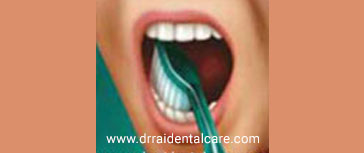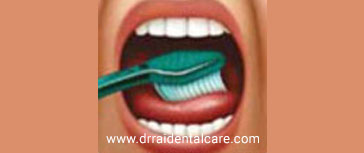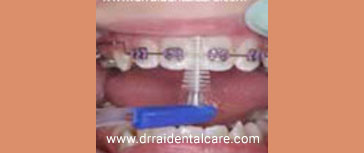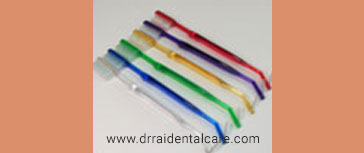There are a number of effective brushing techniques. Since tooth position and gum condition vary, patients are advised to check with their dentist to determine which is the best one for them.





Incorrect brushing, such as using a back and forth motion, can cause the gum surface to recede. It can also expose the root surface and cause it to wear away. You also risk receding the gum line.
Brushing and flossing should be done at least twice daily - morning and night. The following regime is convenient and can be used as a guide line -
It is very important for a baby to learn good dental habits early. But remember it is just as important to make brushing teeth fun as it is to get them 100% clean.
As soon as the baby permits, start cleaning his/her mouth with a piece of gauze wrapped on your finger. This gets the child used to the idea of oral hygiene at a very early age.
For babies and toddlers a special baby toothbrush is recommended. It should have very soft and rounded bristles that will not irritate baby's soft gums, a small oval head to easily reach all areas of baby's mouth and a long handle so you can help with brushing.
From around 3 years of age it's time to start using a children's or junior toothbrush. A good children's toothbrush will have a small oval head, soft and rounded bristles and a long handle. You should still help with tooth brushing because it's not until a child is about 10 years that he has sufficient fine motor control to brush alone.
Teeth should be brushed twice a day for at least two minutes each time. You should also introduce your child to dental floss early so they become proficient at cleaning the areas in between teeth where plaque builds up.
In general, a toothbrush head should be small (1" by 1/2") for easy access. It should have a long, wide handle for a firm grasp. It should have soft, nylon bristles with round ends. Some brushes are too abrasive and can wear down teeth. A soft, rounded, multi-tufted brush can clean teeth effectively. Press just firmly enough to reach the spaces between the teeth as well as the surface. Medium and hard bristles are not recommended
You should change your tooth brush at least once every 2-3 months.
Using an electric rotary toothbrush is far more efficient and effective in overall plaque removal and massaging of the gums. The one we recommend is the Braun Oral B Ultra.